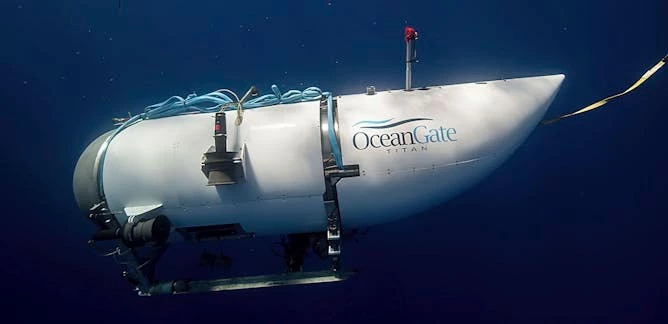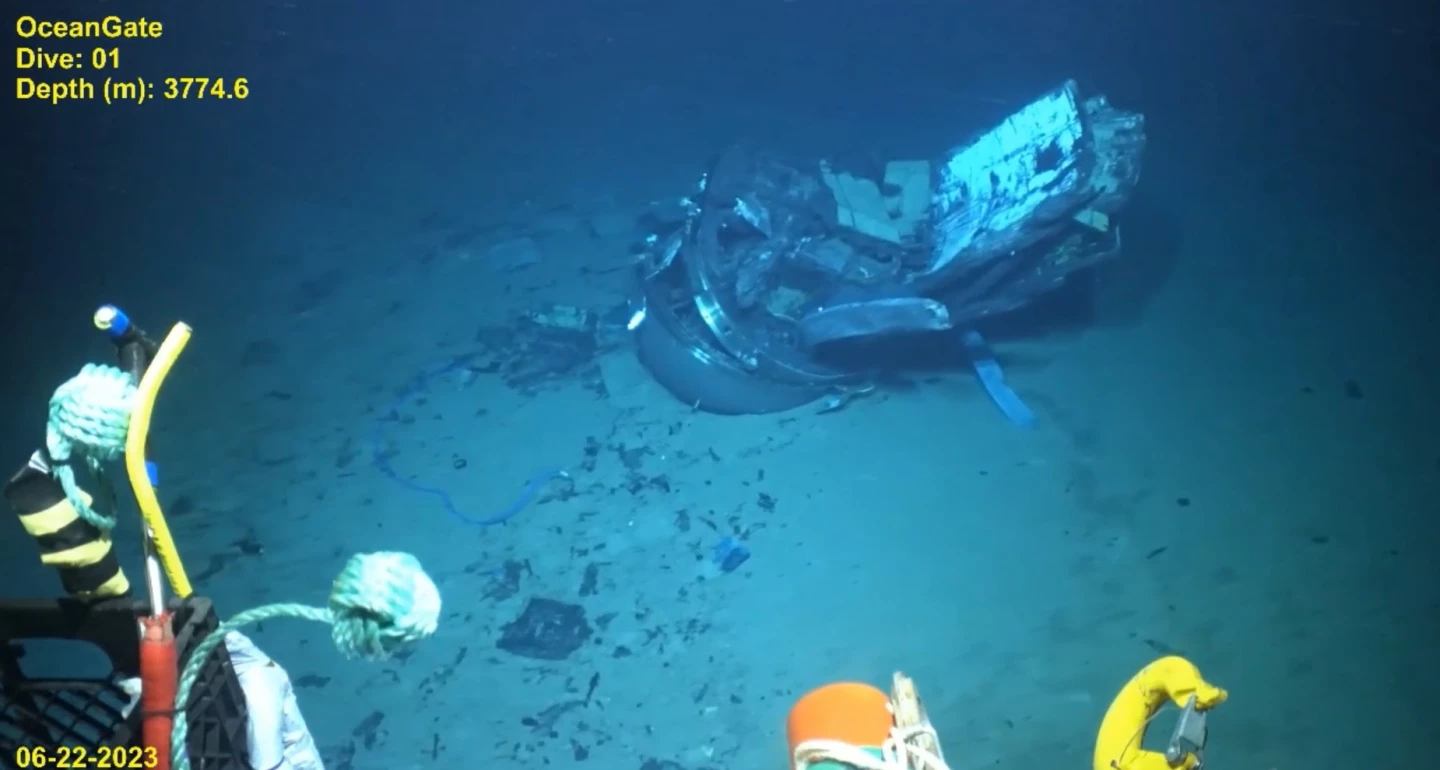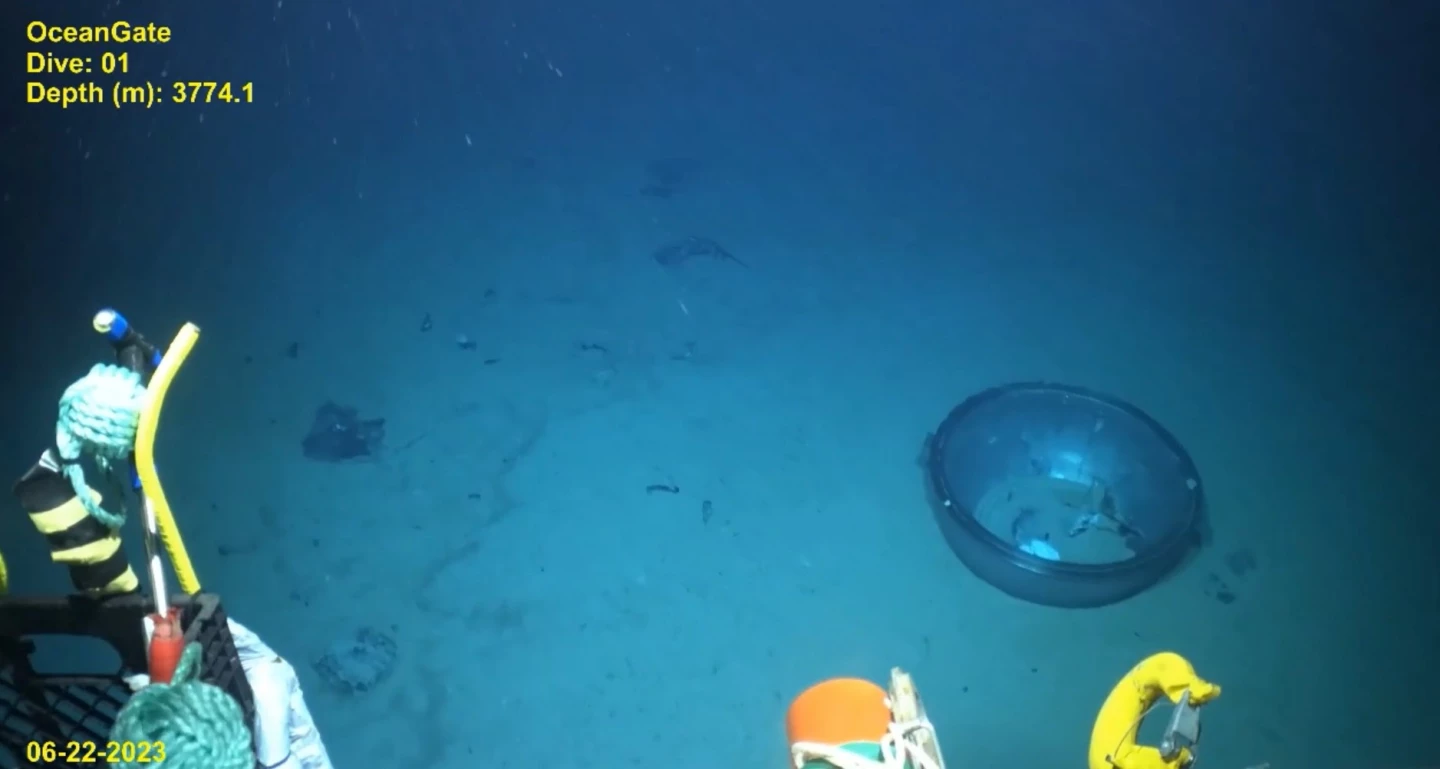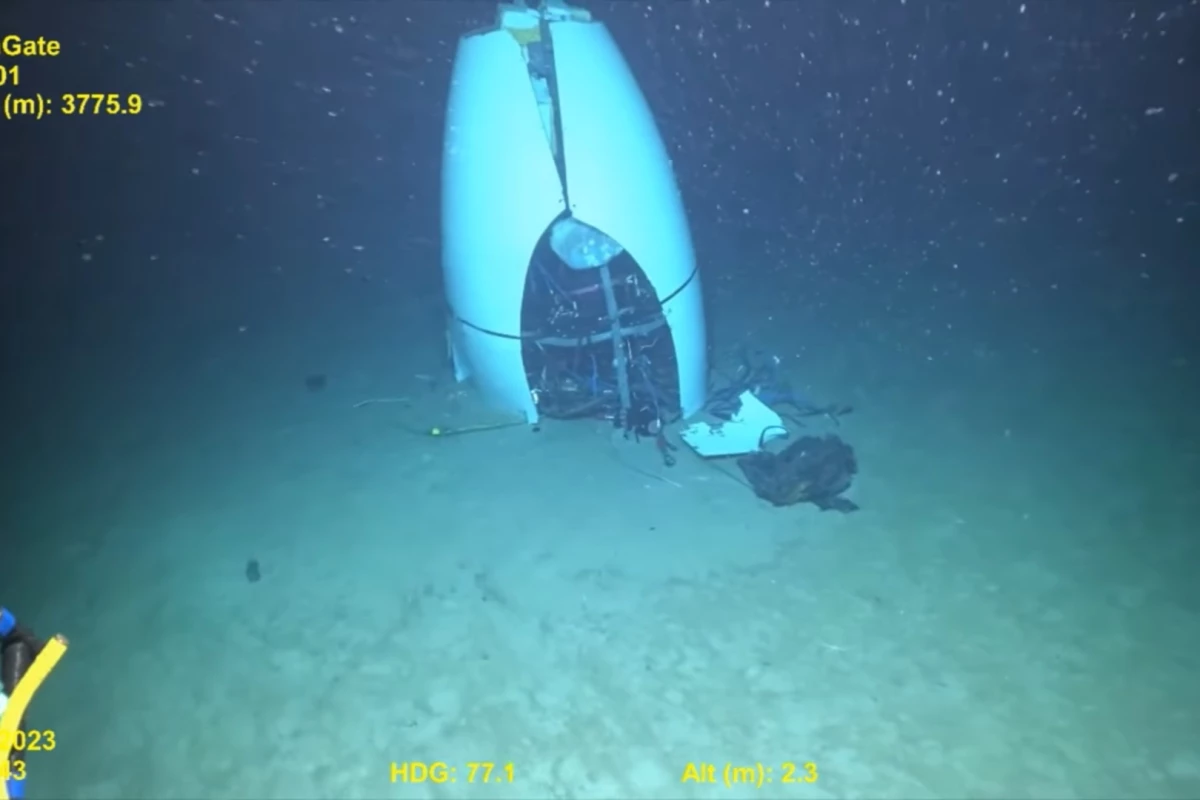The US Coast Guard has released the results of its Marine Board of Investigation of the Titan submersible tragedy that took the lives of five men and the 300-page document makes for damning reading in a tale of negligence and disregard for safety.
On June 18, 2023, the Titan submersible, built and operated by OceanGate of Everett, Washington, made a commercial dive to the wreck of RMS Titanic off the coast of Newfoundland. Company CEO Stockton Rush was at the controls alongside paying passengers that included French deep-sea explorer Paul-Henri Nargeolet, British businessman Hamish Harding, Pakistani-British businessman Shahzada Dawood, and his son Suleman Dawood.
At approximately 10:47 am, what began as an exciting adventure turned into a fatal calamity as all contact was lost with the craft as it reached a depth of 10,978 ft (3,346 m) and a loud bang was heard aboard the support ship. What followed was four days of silence as a search and rescue effort was formed to find the Titan and any survivors.

What was found was wreckage strewn about the ocean floor. Titan had succumbed to a pressure of 4,930 pounds per square inch as the hull imploded, killing all aboard instantly as the submersible disintegrated as if hit by a torpedo.
Since that time, the Coast Guard has been conducting an exhaustive inquiry, interviewing everyone involved in the building and operation of Titan, experts in the field of submarine engineering, and others. In addition, investigators went over the recovered bits of Titan, along with materials left over from its construction, with a fine tooth comb as they sought clues as to what happened in those black depths on the bottom of the Atlantic.
The report is a remarkably thorough history of OceanGate and Titan, with an account in painstaking detail going into every aspect of its planning, construction, testing, and operation. In the end, the conclusions were astonishing to anyone like me who is familiar with submarine designs and how they can fail.
It showed a disaster that was just waiting to happen.

Titan was an odd design for a submersible. Completed in 2021 in Everett, not a stone's throw from an increasingly gentrified section of redeveloped docklands, it was what is described as an undocumented, unregistered, non-certificated, unclassed, manned commercial watercraft.
With an overall length of 22 ft (6.7 m) and weighing 23,000 lb (10,432 kg), it could carry a complement of five people inside its 8-ft (2.4-m) pressure hull made of carbon composites spun from 5-in (13-cm) carbon filaments in five layers, each an inch (2.5 cm) thick, and glued at either end to hemispherical titanium caps, with the forward cap equipped with a 23-in (58.4-cm) acrylic frustum window for visibility.
Propelled by four Innerspace electric thrusters, it could, in theory, operate at depths of up to 4,000 m (13,000 ft).
This carbon composite hull was extremely unusual and a far cry from the steel and titanium ones usually used. These composites are made of carbon filaments set in a resin and while they have many advantages, like light weight, they have many flaws. They're susceptible to fatigue due to changes in pressures and temperatures. Where metals can deform under stress, composites are brittle and once damaged they are almost impossible to repair. If they aren't made with exacting care, the laminated composites can include defects, including voids, contamination, blisters, wrinkles, and porosities. These can be made even worse if the material is punctured so water can get in.

Then add into this mix the fact that very little is known about how these composites will react to making repeated dives when formed into a cylindrical pressure hull and the risk factors multiply at incredible rates.
And to make things go from bad to worse, this cylinder had caps made of titanium bolted onto titanium rings attached to the hull by glue. Even from a preliminary design point of view, this introduces all manner of failure points. In short, a boat I'd never set foot in.
However, that isn't what the report concentrated on. That's just the overture.
What the Marine Board found was an entire culture of bad management, negligence, sloppy standards, and a general disregard for safety by a company where almost all authority ended up concentrated in the hands of one man, the late Mr. Rush, who died aboard the Titan.
According to the report, OceanGate made a career of bad practices. The design and testing process failed to address the fundamental engineering principles of Titan's construction and the company failed to conduct any analysis to understand how the submersible would be affected by the hostile underwater environment over time. In fact, Titan was left for months sitting out in the snow and rain in Newfoundland with temperatures shifting up and down to below freezing and towing it for thousands of miles in rough seas without any inspection of what that would do to it.
In addition to this, the management ignored the recommendations by Boeing, which provided an assessment of the project, that included layers put down diagonally on the hull for greater strength and adding an outer layer of protective foam against damage. In general, winding the filaments on the hull was only subjected to visual inspections, leading to the introduction of a raft of dangerous defects that weakened the hull's overall structural integrity.
On top of this was a company culture that the Board bluntly called toxic. Many of the engineers on the project were barely qualified for their positions and training of even the pilots was perfunctory. Rush insisted on taking on so many roles that he effectively had total control of OceanGate, ignoring others in the hierarchy, and made it quite clear that dissent was not tolerated. Nor would he heed outside warnings as he skirted official oversight and ignored safety procedures in the face of financial problems and delays.
He even cut down the number of bolts used to keep the end caps on from 18 to four because it saved time putting them on.
The result was a craft that was in a very bad way on that June morning. The investigation found flaws in the adhesive holding the end cap rings in place and that the defect-laden layers in the hull were separating. In the end, the toll of abuse and neglect came to a final head as either the forward cap of the Titan tore off or the fore section of the hull caved in.
"This marine casualty and the loss of five lives was preventable," said Jason Neubauer, Titan MBI chair. "The two-year investigation has identified multiple contributing factors that led to this tragedy, providing valuable lessons learned to prevent a future occurrence. There is a need for stronger oversight and clear options for operators who are exploring new concepts outside of the existing regulatory framework. I am optimistic the ROI’s findings and recommendations will help improve awareness of the risks and the importance of proper oversight while still providing a pathway for innovation."
Either way, it shows a harsh lesson that we need to learn every generation and in this case was forgotten. The sea is nothing to be trifled with. As Hammond Innes said, "he who lets the sea lull him into a sense of security is in very grave danger."
Source: US Coast Guard







